Established for over 25 years
Clinics Nationwide
5 Star Google & Trustpilot Reviews
Combining Scalp Micropigmentation and Hair Transplants: The Ultimate Hair Loss Solution
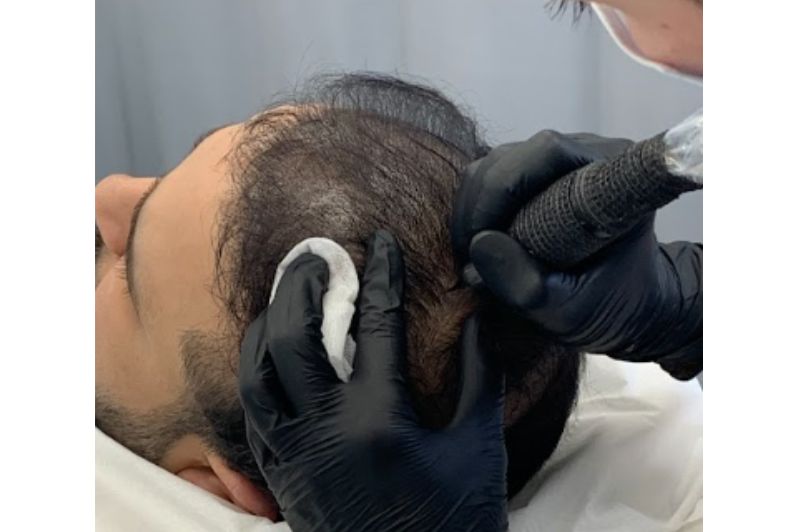
Reading time: 6 min
If you're among the millions of men and women struggling with hair loss, hair transplants and scalp micropigmentation (SMP) can offer effective solutions to restore hair confidence.
While they can be successful individually, combining these techniques can provide even more impressive results.
SMP can enhance the density and coverage of a hair transplant, or effectively camouflage post-transplant scars.
Understanding the ideal timing for SMP after a hair transplant is crucial to maximizing the benefits of this combined approach.
This article explores how these treatments complement each other and when to consider SMP after your transplant to optimize your hair restoration results.
What Is A Hair Transplant?
Hair transplants offer a permanent solution to hair loss by relocating healthy hair follicles from a donor area (typically the back or sides of the scalp) to balding regions. This surgical procedure involves extracting individual follicles, preparing them, and meticulously transplanting them into tiny recipient sites.
There are two main techniques for hair transplants: FUT (Follicular Unit Transplantation), which removes a strip of scalp and leaves a linear scar, and FUE (Follicular Unit Extraction), which extracts individual follicles with minimal scarring.
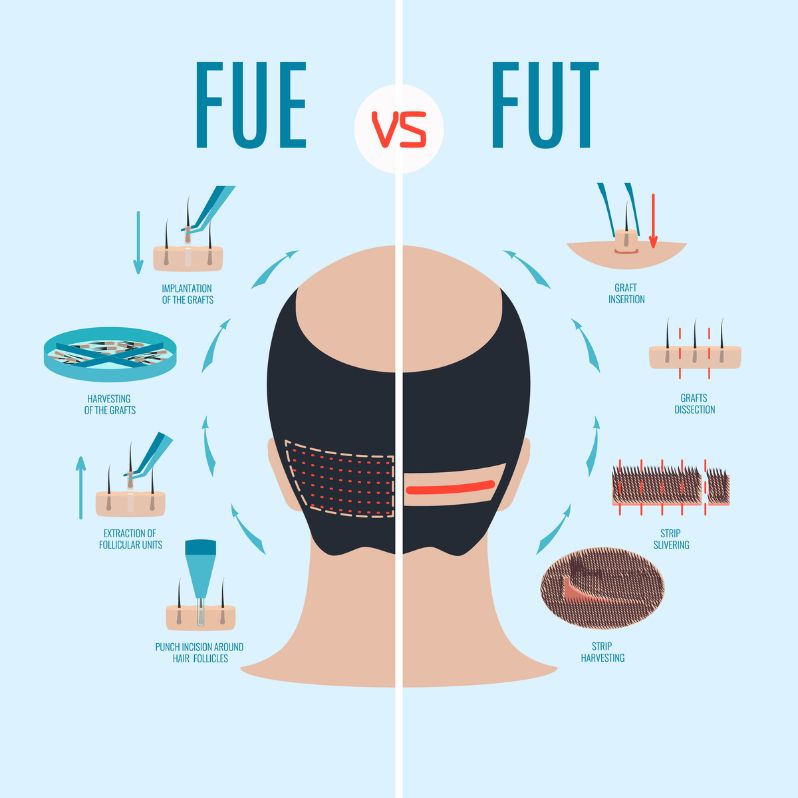
Infographic showing the key differences between FUE & FUT Hair Transplants
What Is Scalp Micropigmentation?
The aim of Scalp Micropigmentation (SMP) is to disguise hair loss and restore hair confidence by delicately implanting single ‘dots’ into the surface of the scalp. Every single implantation is deposited to re-create a natural looking head of hair, either for a full head shaved look, to give the illusion of more density in thinning hair, or to camouflage scar tissue.
A digital device and micro-needles are used to implant pigment / ink, that is colour matched to suit your skin and hair, to replicate your natural density and hair growth to ensure that the final result is natural and effective.
SMP is effective for both men and women and offers a hair loss solution to many conditions and concerns.

Scalp Micropigmentation technician performing a density treatment
Enhanced Density and Coverage:
Hair transplants primarily address areas of complete baldness by transplanting healthy follicles. However, the transplanted hair may not achieve the desired density or coverage that was intended. SMP can fill in the gaps between transplanted hairs, creating a denser and more natural appearance.
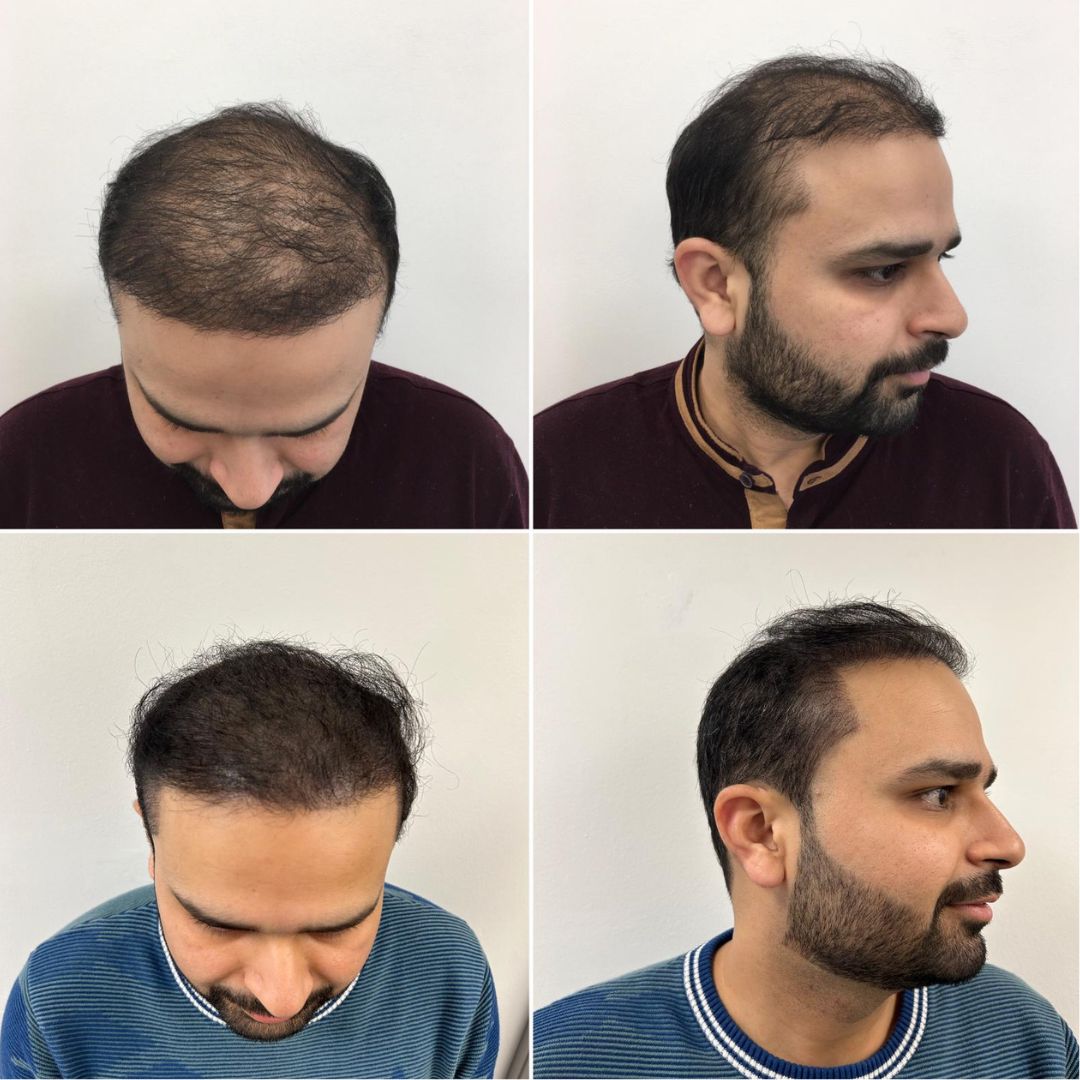
Density Boost Following Hair Transplant - Results On A Male FTG Clinics Client
Scar Camouflage
Hair transplant procedures, particularly FUT, can leave noticeable scars in the donor area. SMP can effectively camouflage FUT & FUE scarring, helping to reduce their appearance and blend in with your natural hair.
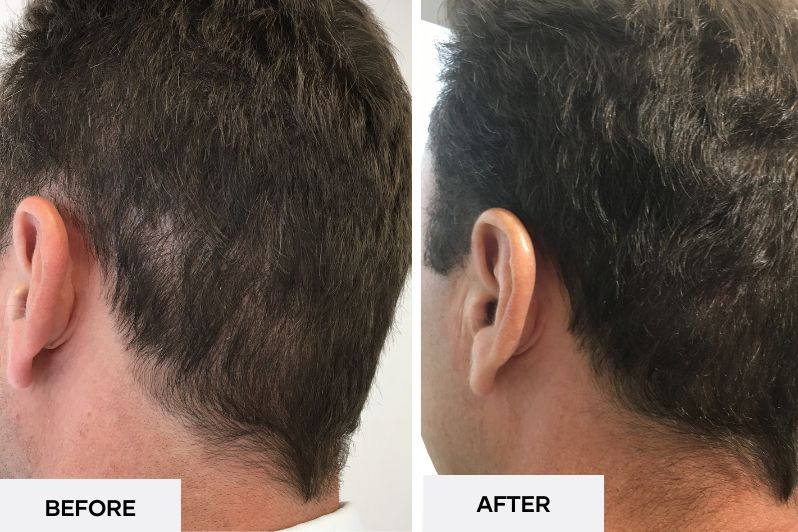
Scalp Micropigmentation Scar Camouflage For FUE Donor Site
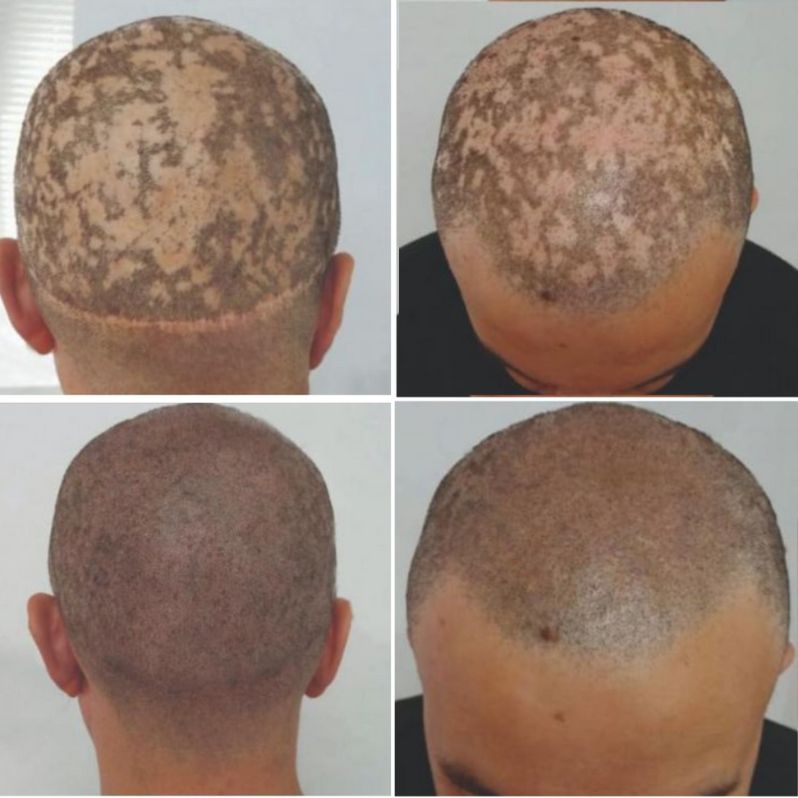
Scalp Micropigmentation Following Failed Hair Transplant & FUT Scar Camouflage
Improved Hairline Definition
Hair transplants can recreate a natural hairline, but sometimes you may not get the coverage and density you hoped for. SMP can be used to subtly define the hairline further.
Addressing Diffused Thinning
Individuals with extensive hair loss might not have enough donor areas for a full hair transplant. Combining SMP with a limited hair transplant can create the illusion of a fuller head of hair, even with limited donor resources.
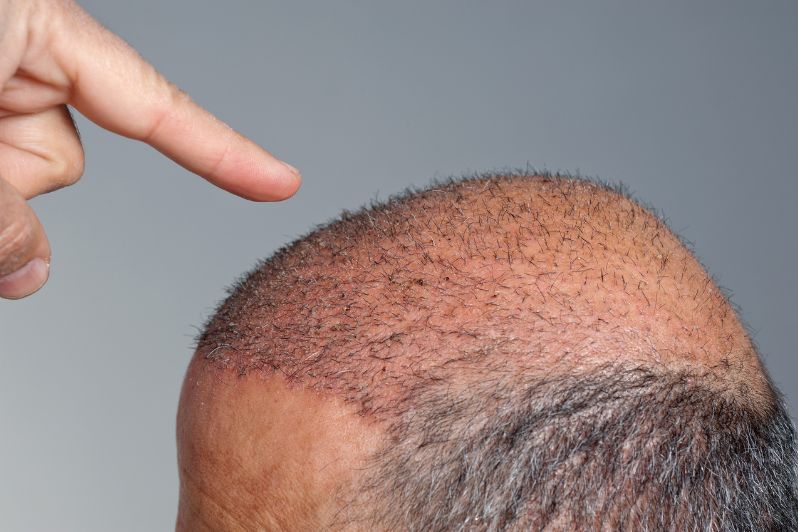
Photo of a man's scalp quite soon after a hair transplant
SMP For Enhanced Density & Coverage
Achieving successful scalp micropigmentation on a hair transplant recipient site requires waiting for the transplant to fully mature. This typically takes around 12 months.
Observing the final density and coverage of the transplant ensures you target the correct areas for increased density with SMP.
Enhance Your Hair Transplant Results: Beyond the Wait
While waiting for the recommended 12 months before considering SMP after your hair transplant is crucial, there are still proactive steps you can take to optimize results and promote healthy growth:
Embrace a Nourishing Diet: Your body needs the best fuel for recovery and hair growth. Prioritise a balanced diet rich in protein for strong hair follicles. Additionally, ensure you're getting enough vitamins and minerals like Vitamin C, iron, and biotin, which contribute to healthy hair.
Gentle Scalp Massage (Wait 6 Months): Scalp massage can help stimulate blood flow and encourage hair growth. However, wait at least 6 months post-transplant and be extremely gentle to avoid harming the newly transplanted follicles.
Explore Scalp Microneedling (Professional Consultation Advised): While not recommended before 9 months, microneedling might be an option in the future. Seek professional guidance from a qualified practitioner who can assess your specific situation and advise on its suitability and potential benefits.
Scar Camouflage SMP on Donor Site
It's vital that you allow scarring to fully heal.
- FUE scars typically take around 12 months to heal.
- FUT scars can take longer to properly heal, from 1-2 years.
Interrupting your natural healing process for scars can be detrimental long term. If you are in the early stages of healing, then there are some things you can do to help your scars, as you heal.
- Prioritise sleep and stress management.
- Maintain a good diet rich in essential nutrients.
- Apply sunscreen on your scars to protect them from the sun
Once your scars are showing signs of healing (they are not red or pink in colour, but white) you may want to consider looking at a microneedling treatment plan. The purpose isn't to help hair grow back in scarred areas, it's to condition the scars for future SMP Scar camouflage treatment. You may also have scar tissue that needs flattening. The goal is to create the best possible canvas for the SMP by improving pigment retention long term.
Yes, you can absolutely get a hair transplant after undergoing scalp micropigmentation.
The pigment used in SMP sits within the upper dermis layer, well above the deeper layers involved in hair transplantation. Therefore, SMP does not interfere with the hair transplant procedure or hinder future hair growth.
The recommended waiting period after scalp micropigmentation before undergoing a hair transplant is 2 months
Summary
Hair transplants offer a surgical solution by relocating healthy hair follicles to bald areas, while scalp micropigmentation (SMP) uses tiny pigment dots to create the illusion of thicker hair through follicle replication. Both provide excellent standalone results, but combining them can offer even greater benefits. If you're considering SMP after a transplant to boost density, camouflage scars, or achieve a more refined hairline, patience is crucial. Adhering to recommended waiting periods ensures optimal results and a long-lasting, natural look.
Does SMP Lighten After A Few Days?
Yes, Scalp Micropigmentation typically does lighten after a few days following the treatment. This initial lightening is a normal part of the healing process. When SMP is first applied, the pigment may appear darker and more intense.
As the scalp heals, minor scabbing may occur, and these scabs will naturally shed as part of the skin's healing process. When these scabs fall off, they can take some of the pigments with them, leading to a lighter appearance of the micropigmentation. This lightening effect is generally expected and is considered in the SMP application process by skilled practitioners, who may plan multiple sessions to gradually build up to the desired shade and density.
Can Scalp Micropigmentation Be Removed?
Individuals might seek Scalp Micropigmentation (SMP) removal for various reasons, such as dissatisfaction with the initial treatment, changes in preference, or the need to adjust to further hair loss.
There are two primary options for SMP removal:
Laser Removal:
This is the most effective method, particularly for extensive treatments or serious corrections. It works by targeting the SMP pigments with laser energy, breaking them down for natural elimination by the body. This process typically requires multiple sessions and can be uncomfortable, sometimes leaving a slight residue in cases of deeply injected pigments.
Salt and Saline Solutions:
Suitable for smaller adjustments, such as fine-tuning the hairline or addressing minor areas of progressed hair loss. This less invasive method draws out the pigments and can be a viable option for those seeking a gentler approach.
Does The Pigment Change Colour With SMP?
When the pigment is implanted correctly, with the correct colour tone used and aftercare followed, the risk of dis-colouration is minimal. As with all pigment implanted into the skin it is subject to external factors which will affect the pigment over time.
The ‘blue’ tone typically associated with SMP is thankfully seen less and less, thanks to the evolution of materials used and also to enhanced educational and implantation protocols.
Do I Have To Shave My Hair Before SMP
Whether it is recommended to shave your hair or not will depend on the type of treatment you are looking for and what can be achieved with your existing hair. For example, if you are looking for density boosting treatments and have sufficient hair to ‘add’ density to then no, you do not need to shave your hair. If you are looking to lower, re-define or augment a hair line then the hair must be worn shaven for a natural result.


Article author Dawn Forshaw — Published on 1st March 2024
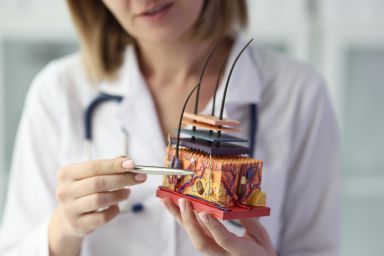
Does Scalp Micropigmentation Damage Hair Follicles?

Scalp Micropigmentation Aftercare: A Comprehensive Guide
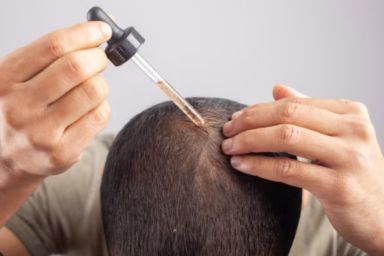
Can You Use Minoxidil with Scalp Micropigmentation?

Eyebrow Hair Loss Demystified: Uncovering Causes and Pursuing Solutions
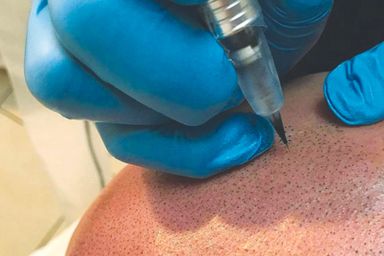
Scalp Micropigmentation Fading: A Comprehensive Guide

Female Temple Hair Loss: Causes, Prevention & Treatment

Botched Scalp Micropigmentation Treatment: What Are Your Options?

Is Scalp Micropigmentation Permanent?
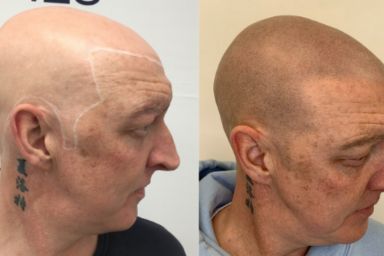
Paul's Transformation: Navigating Alopecia Universalis with Eyebrow & Scalp Micropigmentation
- Choosing a selection results in a full page refresh.
- Press the space key then arrow keys to make a selection.

